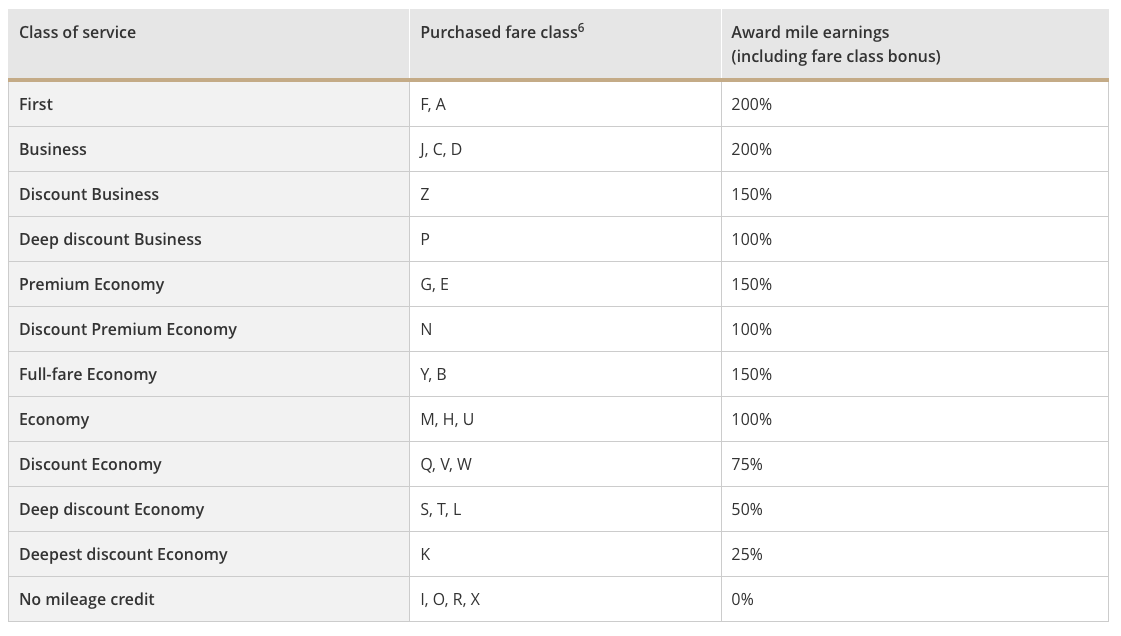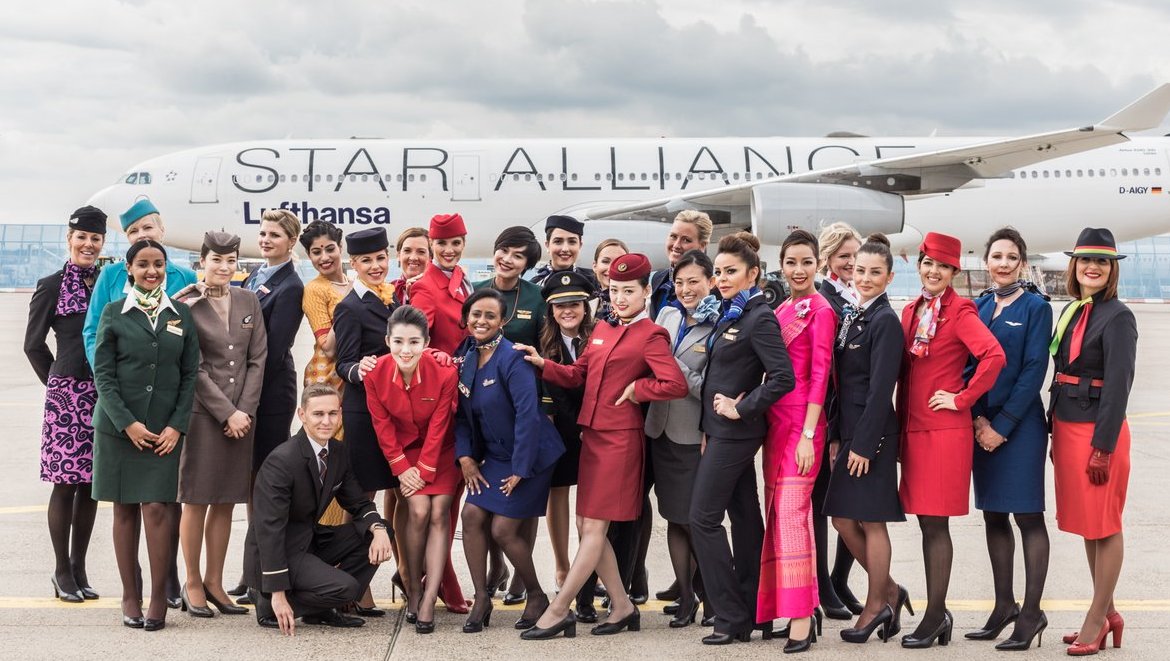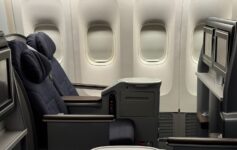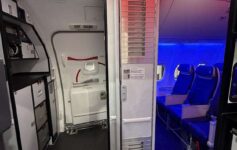For those willing to invest the time, the changes to United MileagePlus actually may make it cheaper to qualify for top-tier status on United than it is now. But it will take some serious and creative mileage running…
United will now let you earn Premier Qualifying Points (PQPs) via Star Alliance partner-issued tickets. PQPs replace Premier Qualifying Dollars (PQDs), though will be awarded in largely the same way. But there is a new twist, in that you do not have to book an -016 issued United ticket in order for your spend to qualify toward elite status.
> Read More:Fundamental Changes To United MileagePlus In 2020
> Read More:United MileagePlus Announces New 2020 Qualification Requirements – Good and Bad News
Since United Airlines does not have access to how much you paid partners for flights, it will calculate PQPs based upon distance flown plus any fare class multiplier (reduced earnings for cheaper economy class tickets and increased earnings for premium cabin tickets).
Let’s say you are flying a J fare on a Lufthansa-issued ticket from LAX-FRA. Currently, J fares earn 200% of actual miles flown. That means the 5,806 mile journey earns 11,612 award miles.

| Star Alliance partner | PQP total |
|---|---|
| Preferred partner PQP | Award miles divided by 5 |
| MileagePlus partner PQP | Award miles divided by 6 |
Preferred partners include:
- Air Canada
- Air China
- Air New Zealand
- All Nippon Airways
- Austrian Airlines
- Avianca
- Azul Brazilian Airlines
- Brussels Airlines
- Copa Airlines
- Eurowings
- Lufthansa
- SWISS International Airlines
United will award PQPs based upon dividing that award mile amount by five for preferred partners and six for other partners. So since Lufthansa is a preferred partner, divide 11,612 by 5 and you get 2,322.40 PQP.
The Opportunity
Imagine if you could piece together long-distance trips that are relatively cheap and earn top-tier status on United without spending $18,000 (and 54 segments).

This is a 17,954 mile journey. Air China discounted business (R class) fares earn 125% on United.
So let’s do the math.
Take the 17,954 miles and multiply by 1.25. You get 22,442.5 miles.
Air China is a preferred partner, so we need to divide that 22,442.5 by five. That equates to 4,488.5PQP.
So instead of spending $2,331.85 and earning 2331.85PQP, you are spending $2,331.85 and earning 4,4488.5PQP.
This is just one example…the possibilities are staggering. Throw in an attractive fare sale to SE Asia or India and you can further push up that ratio between dollars spent and PQP earned.
Let the games begin.
CONCLUSION
It is a tad ironic that United’s efforts to simplify earning status and take away the distance metric have actually resulted in a new way in which distance matters more than ever.
I’ll look into this more as time permits, but wanted to start the conversation on the opportunity to, at minimum, offset the increased spending requirement, and potentially even secure 1K status for cheaper than has been possible in years.
image: Lufthansa





Actually, Air China *is* a preferred partner so PQP = Award Miles / 5
The list of preferred airlines is indeed larger than originally broadcast. Originally Air China was not part of the list.
Look, Matt, as a blogger you could at least have a proper look at the documentation that UA has published around this:
https://www.united.com/ual/en/us/fly/mileageplus/earn-miles/airline-partners/premier-qualifying-credit.html
—
MileagePlus members can earn Premier qualifying credit by flying United, United Express®, and the following partner airlines.
Preferred partners:
Air Canada
Air China
Air New Zealand
All Nippon Airways
Austrian Airlines
Avianca
Azul Brazilian Airlines
Brussels Airlines
Copa Airlines
Eurowings
Lufthansa
SWISS International Airlines
Ease up. It’s linked in the post, so the commenter could have clicked and found it there. Matthew can’t have all of this memorized from an announcement this recent.
I was explicitly told by United that the only four preferred partners were Air Canada, Copa, ANA, and Lufthansa.
Nice to see the list is larger than originally broadcast.
But this change sucks for international travelers who qualified on cheap economy flights. A friend of mine used to qualify for gold with five to six cheap (~$450) round-trips from Europe to the us on LH, LX, UA etc. That brought him to 50k miles and since he isn’t a U.S. resident, the PQD requirement was waived. Therefore his spend to reach Gold was usually below $2000. Now with the same fares he would earn the 25% of distance (assuming LH ticket stock in K fare) divided by five which would mean in order to reach gold he’d need to fly 160000 miles a year. So for some people this change works out great and for others it means changing the frequent flyer program or losing status.
Also ironic that this will result in people spending more money to “not” fly United. Did I say irony? I meant something else…
Yeah. I was thinking the same. Why fly united? Ib think they are going after business travelers that also mileage run. You will probably have to pay more now to mileage run to get status.
Anyway the life where you don’t need status is better than the one where you have status that will get you free massages because you freaking need them.
Only when the math provides an incentive. For other journeys (shorter, higher priced tickets) the PQP advantage will be flying UA.
Quite. I generally go to Singapore once a year on United from the US northeast, now it makes a lot more sense to fly Singapore Airlines even as a non-preferred partner, if I’m not able to buy biz class outright. That’s 9400 miles each way / 6 = 3100+ PQP on a ~1200 USD fare in E+ on SQ, more than double what I’d earn on UA. Repeat that process for other partner airlines for my other overseas trips and it becomes a lot more realistic for me to hit 24,000 PQPs than it would be if I were flying on United itself.
But what is the POINT of earning 1K status if you’re NOT going to fly united… all those PlusPoints will be useles…
Why broadcast so much! We’re smart – we can figure out on our own. Wouldn’t want those multipliers to flatten out.
My guess is their intent wasn’t to make it much harder to earn status – they added more avenues and increased the threshold accordingly.
amen Greg!
So it’s a similar situation to Flying Blue Air France members: flying on discounted partner airlines gets a much better return than in AF or KLM , because they can’t tell the $ value of those partner flights.
I think another sweet spot if you want to fly in economy: look for cheap Air Canada, Asiana, or SAS economy class tickets, since these earn a minimum of 50% miles flown.
SFO-YVR-HKG frequently runs for the mid-$400s but will earn you roughly 1400 PQPs even in the cheapest classes. Air Canada is the sweet spot here.
@ Matthew — Best part is that there will be way better opportunities than your example! I now expect to be a 1K again…
@ Matthew — After more thought, we will regaining A3 Gold instead. United status is a ripoff.
Similar to flying oneworld Premium Economy and crediting the flight to AA to trick the EQD calculator. This encourages people not to fly AA.
Matthew, I have a lot of respect for you and read your blog regularly but can’t help but think that in this particular instance you are making excuses for United. Let’s face it: they’ve decimated the already little value they had in MileagePlus. They’ve even outdone delta (which is saying a lot).
Sam, I disagree. Perhaps I will address this in a separate post.
I don’t see nearly the value in United that I used to. That’s an objective measure, not a subjective one. For budget-conscious travelers like me, who run a small business and don’t generally buy full-fare tickets, the reduction in earnings and increased spending thresholds have hurt.
I no longer seek status. I buy fares that work for me on the airlines that work for me at the times that work for me. That still translates to a majority of travel on United. But I’m under no delusion that there is outsized value in MileagePlus.
I have to agree with you here, Matthew. I have no illusions of grandeur with MileagePlus anymore. I’m on 50% “other people’s money” and 50% my own. The increasing spend and the corresponding value I get, make the cost-benefit ratio not worth it for me. I live in a Delta hub, but choose to fly United. Part nostalgia, part network.
But, this year (2019) I’m finally letting 1K lapse and I will just book on what’s most convenient. I think I’ll always place a preference on UA, but will place a greater importance on convenience/product over loyalty. I’m already buying up front for personal trips and am sitting on 9 GPUs that will die come 1/31/20. So, it’s not like those help dissuade me.
Absent anything new and amazing with my United Club Card benefits, I’m dropping that and switching to Sapphire Reserve. So, for UA, that’s two diminishing revenue streams from me.
Bottom line, this is just another devaluation. The difference is, normal people lose while big spenders win. Not exactly novel, although it’s nice to see United doing something Delta hasn’t done before. Now if only United would do something that purely benefited to customer, that would be truly novel. Meantime, it’s hey big spender…
It’s not as clever as you think. You need 6 of those trips to get to 24,000 PQPs. 5 won’t do it. 6 trips = $14k spending, and how many times are you really going to find / be able to go on a long haul mileage run like that? Fewer and fewer people are going to go to these lengths or have the odds work for them. It’s a degradation of benefits, qualifications, and no getting around it.
My first reaction when I read the about the change was that this would result in people spending more on partner airlines than United and also make it more attractive for people to have Star Alliance Gold through other partners — both cases, less flying on UA.
For some reason way back in 1989 I decided to focus my flying on United – and several years ago I achieved 1 million mile status. So what does million mile status do under this new plan?
Also – what happens to the miles we’ve accrued in our MP account. How are they converted next year…or do we simply lose them all? We several hundred thousand miles that we were going to use on a trip
No change to MM status (you’ll remain Gold for life) and your award miles will remain intact.
That’s cool – I guess what I really meant to ask is how do those saved miles convert into the new upgrade method
I’m mildly surprised that Air China is a Preferred partner, given that they have the most business class sale fares in *A (aside from TAP one-ways). Then again, staying on the good side of Beijing seems wise these days.
Rookie question… If I book on Lufthansa and the flight is operated by United, do I still get the PQP’s as (miles earned on Lufthansa program)/5?
If United works the same way as Delta, as long as your ticket is issued by Lufthansa your PQP’s will be determined by United’s conversion table. Delta frequent flyers take advantage of the enhanced MQM’s (PQP’s) and MQD’s (PQD’s) and Sky Miles (frequent flyer miles) generated by trips on partner airlines. Word of caution: do not create a Lufthansa frequent flyer account. Doing so will wipe out the enhanced returns you were expecting by flying on a United partner. After you book your ticket on Lufthansa add your United MileagePlus number.
Hi Matthew,
Gaining 1K status by flying cheap long haul (meaning essentially US to Asia, or India) business tickets is a good idea to develop and research further. I encourage you to make additional posts on this topic. And to alert us each time a Star alliance airline offers a discount business ticket to Asia or India. It would require about 6 RT business class tickets to get the 24K PKP, and probably $12K or more. Still, it would be considerably cheaper than paying $24K, since the 54K segments requirement is out of reach for long distance travelers.
An alternative strategy would be to forget about United 1K status and elect another Star Alliance airline for crediting our miles when flying United or any other Star alliance airline. Which Star alliance airline, if any, provides a status roughly equivalent to 1K? Meaning providing generous equivalent upgrades (GPUs/RPUs) and other benefits? I am thinking SQ, NH, TK, less so TG or AI, and possibly CA and LH. A post making a comparison of these programs with the perspective of getting 1K-like benefits would be of tremendous value for current 1K long distance travelers.
Would you commit to add this to your to-do list? Since your blog is the best for United flyers, you are in my view the most qualified for researching and developing this alternative strategy.
Matthew so what is your suggestion for a worker the company makes you buy cheapest economy ticket. I used to be able to maintain at least gold with my 3 or 4 international trips a year. I used to alway fly delta but they stopped flying to Taiwan so i switched to United Suggestions maybe fly eva
This would actually increase your options as you can fly cheaper Star Alliance partners but now earn from those flights and likely at an outsized value to what was actually paid for the flights.
Matthew, in your Lufthansa example, because of the J fare code you multiplied the mileage x 2. (200%)
But my understanding from the UNITED website (pasted in here below) is that only the 100% would be eligible. Make sense, or am I misunderstanding the statement below?
“Please note award miles is your base award miles earning plus your fare class bonus award miles earning, if eligible. Premier bonus miles earned are not included within this calculation and are ineligible for Premier qualifying points accrual.”
Hi Alec,
The “plus fare class bonus award miles earning” is the bonus for the J-class booking.
The Premier bonus is the multiplier for status, applicable only to RDMs.
Hilarious examples…those of us who make 1k normally (I am 8 years in) do so on business travel. We have kids, wives, jobs and personal obligations. There is no way I am making ONE of those crazy trips at that kind of cost, much less 4…all to obtain the same benefits as the year prior which are effectively useless if you buy all J anyway? I am going to let 1k lapse in January 2021. AA EXP will do just fine.
Matthew – I’m wondering if this is only a momentary loophole, because (for instance) LH is going to a revenue based system, as well. I assume other *A carriers will, as well, once their systems support it.
https://www.miles-and-more.com/row/en/program/flight-benefits/calculate-flight-miles.html
Not a loophole. Delta and American have been doing this for years. This was one of the complaints about the United program, you couldn’t earn PQDs on partner flights. So they are addressing this but more than offsetting it by increasing the spend required.
Has there been any clarificationon whether LH will report award miles using revenue or raw miles back to United for PQP purposes?
If you are doing mostly long hauls, very difficult to hit the required segments, so in reality United jacked up your spend from 15K to 24K in a single year. This does help but are jumping through these kinds of hoops really worth it? Also if you are flying mostly Star Alliance, you aren’t getting free economy plus seats (many dont have them and have 31 inch pitch in regular economy) and there are only a few airlines you can use your upgrades to business on so what’s the point? Better to take your business somewhere else and switch to Delta or American if you fly long hauls, they don’t have the stupid segment requirement and have already have similar formulas for calculating dollar earnings on partners.
I meant 24K PQP, instead of 24K PKP, sorry for the typo.
Hi Matt,
thanks for all your input! I am one of these cheap airfare ticket buyers but due to travelling a lot to Europe and South America (Brazil) each year (10-12 trips/year) and being able to waive the PQD I always reached the 1K last year due to flown PQMs.
Now I am strongly considering other options as up to date I only spend $5,000 on United tickets in 2019. So, I am probably ending up at $6,000-6,500 by the end of the year. Speaking of this, it means next year with a similar flight and ticket purchase activity (cheapest fares, often also OTAs) I am falling down from 1K just to Silver!!
Since I am traveling often internationally and we don’t get complimentary upgrades anyhow on it I am considering now buying non 016 etickets whenever I have a fixed schedule.
Now my questions:
1. Lets say I buy a LX return ticket (020, class L) from EWR to FRA for just $500. Outbound is operated by UA and inbound by LX. The mileage per segment is let’s say 4,000. For the return flight it is clear to me. I earn 4000/5= 800 PQD. How is the UA outbound flight handled if it is a LX (020) ticket? In the same way or does UA see the price I paid for this segment (let’s say $200 base fare) and credit me only 200 PQD for it?
2. What about Online Travel Agencies (OTA) such as cheapfareguru or fareboom> Very often, when I buy a UA ticket with them in any fare class I see in my MP account that this eticket was handled as “bulk” ticket. So, although the flights are serviced by UA I didn’t get PQDs for these etickets via OTAs. How will that be handled in 2020?
Thanks in advance!
Kay
You are not alone, Marky…
UA will see a flood of people CANCELLING the UA credit card as well as UA mileage plus… as already observed, for non resident customers, they seem to be sending a message: we don’t give a damn about non Americans.
UA’s new programs sucks a big one if you fly economy for pleasure and business (within a budget); it’s that simple. Up until 2020 I could get Platinum with 6 roundtrip flights from Denver to Shanghai. Now I need 14 without meeting PQF or ~12 and ~6 other domestic rountrips to meet PQF requirement. UA is just catering to people who’s jobs allow business/first class flares or last-minute higher fares. Yeah you can work the system and fly partner airlines, but you don’t earn lifetime miles.
Fortunately for me, I will hit a million lifetime miles in 2-3 more flights and thus earning Gold lifetime status. So, I can cancel my Mileage Plus card and tell UA to pound sand by flying other airlines. Given that I pay for 3 other tickets when traveling for pleasure with my family, it’s that much more gratifying sticking it to UA by switching my allegiance.
One item I am not seeing addressed is that when you look at partner programs they are still offering miles as a reward. Spend this get 1,500 miles. There appears to be a gap in the partner system at this point. So what if I get 10K miles really what does it matter? Or am I missing something here?
Question: if UA doesn’t see the ticket cost, could you book a Lufthansa flight with miles and still get PQP from United?
Was thinking that might be a loophole for those of us with a bunch of miles, but not a large budget.
United won’t see the ticket price, but will see the booking code. Award booking codes (X for economy, I for business, O for first class) still will not earn miles.